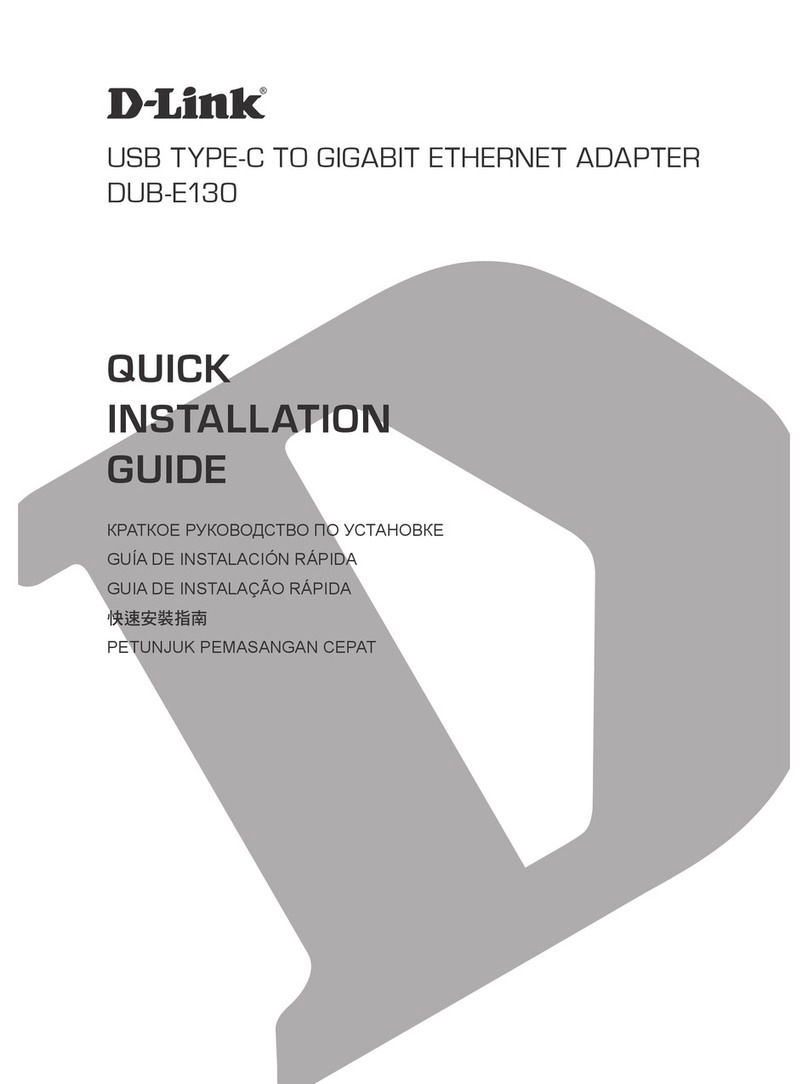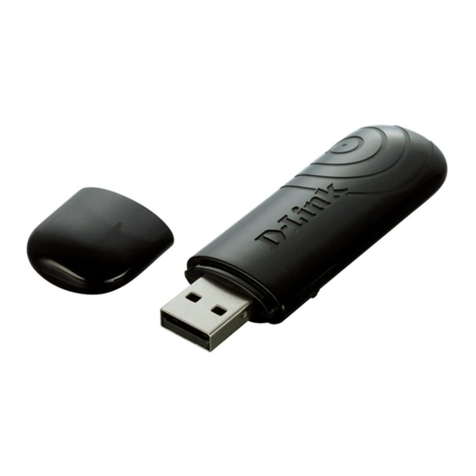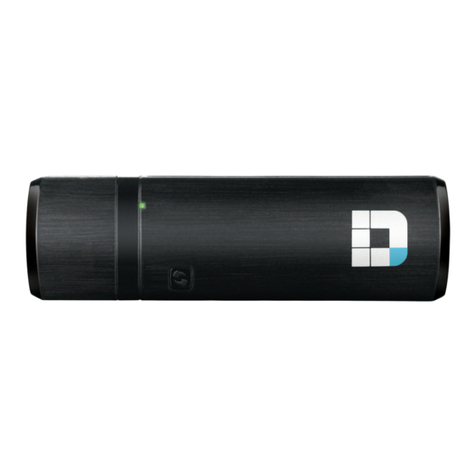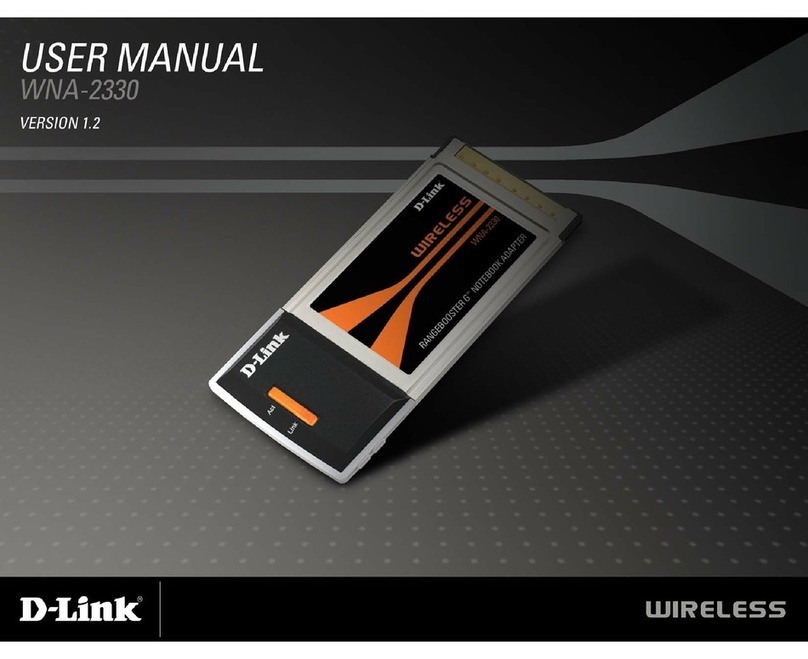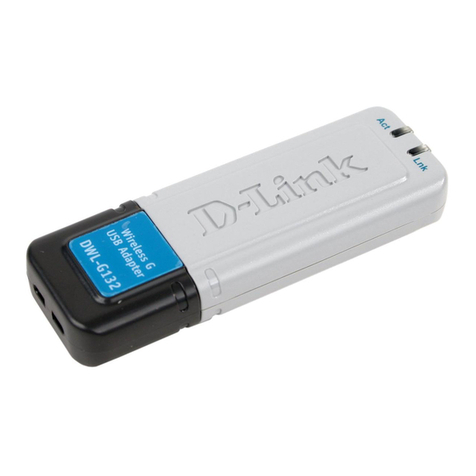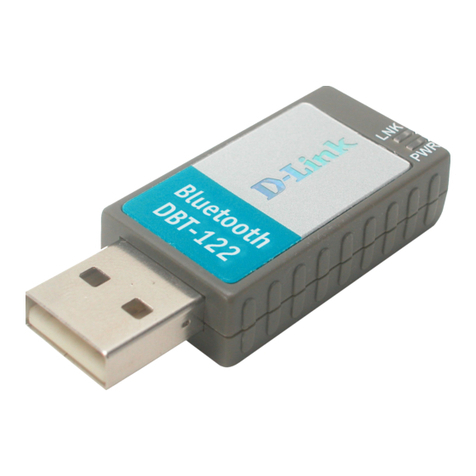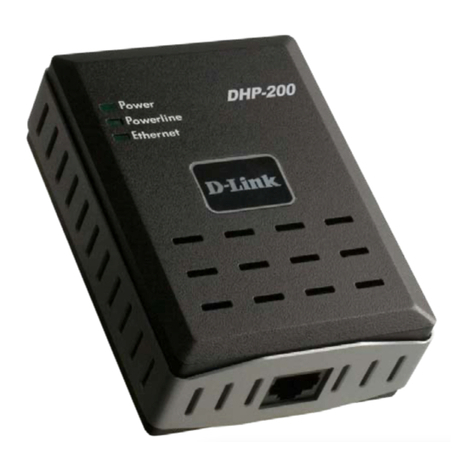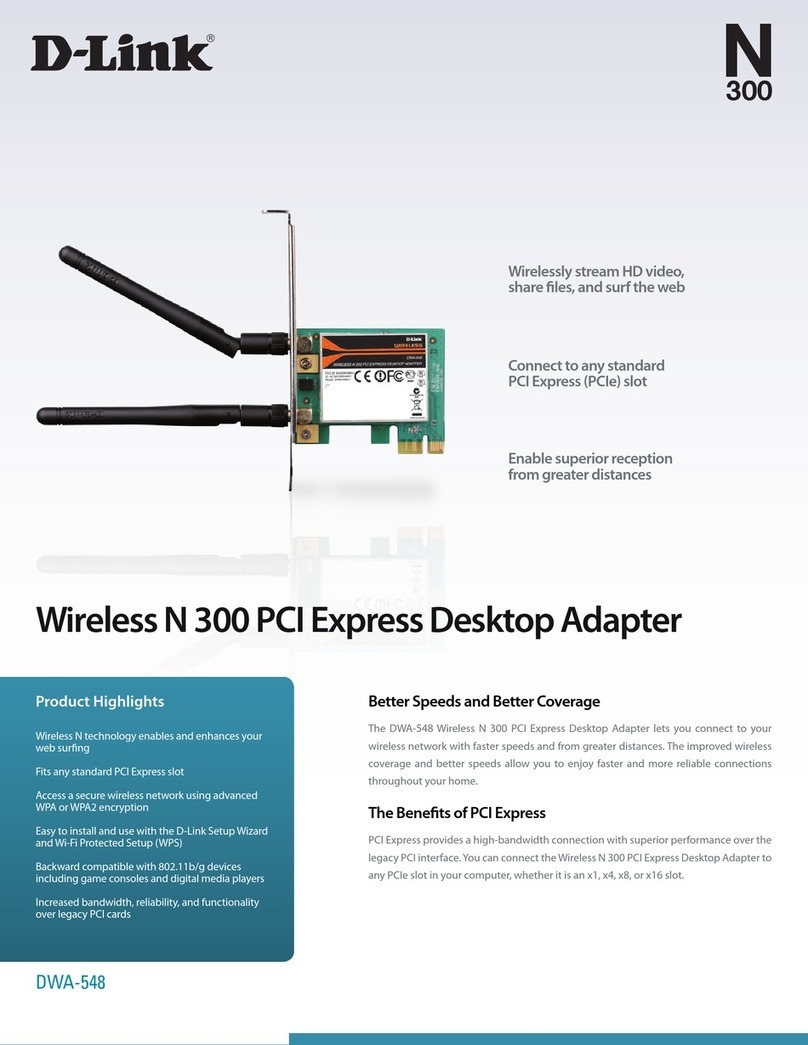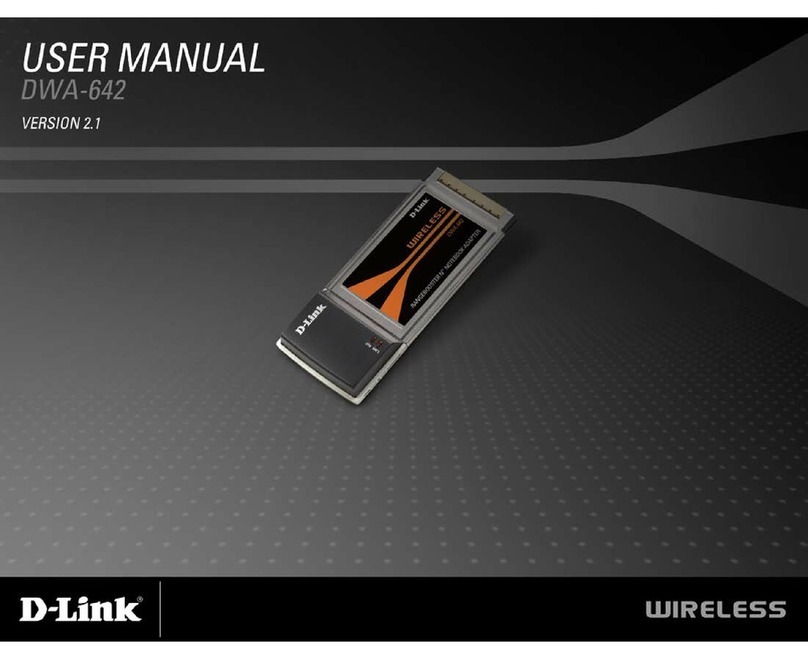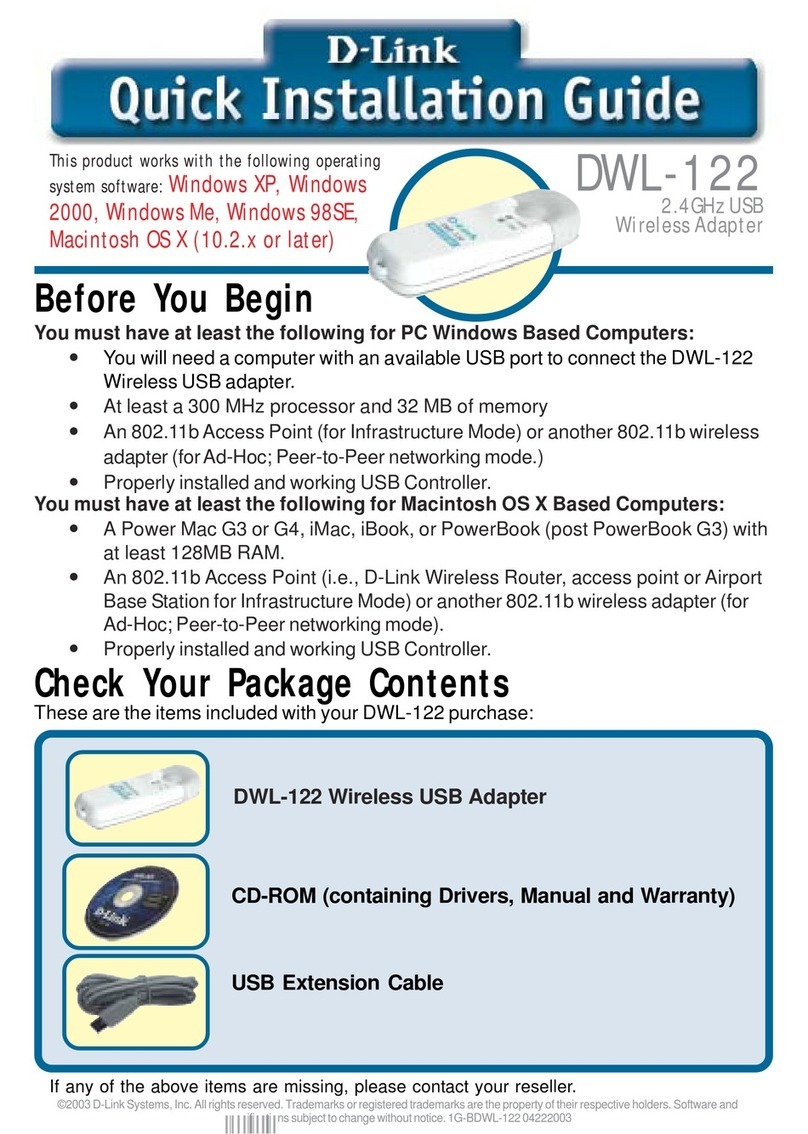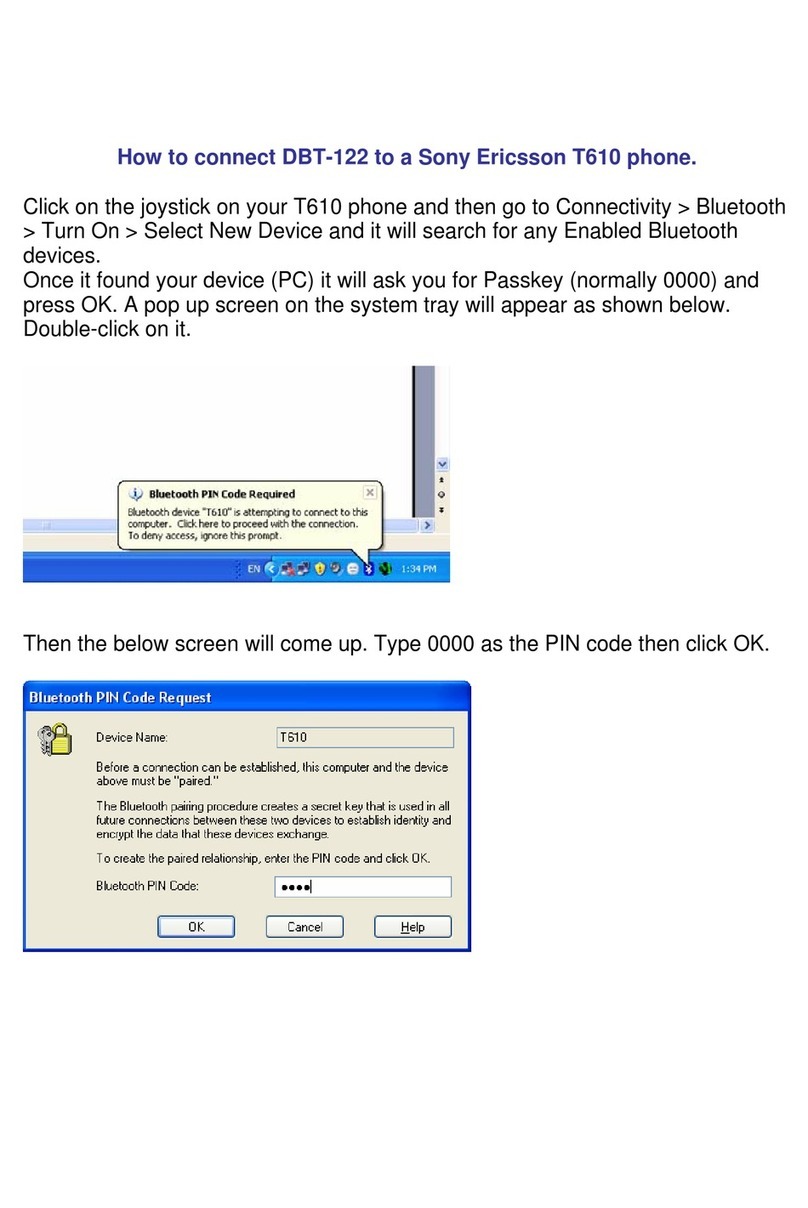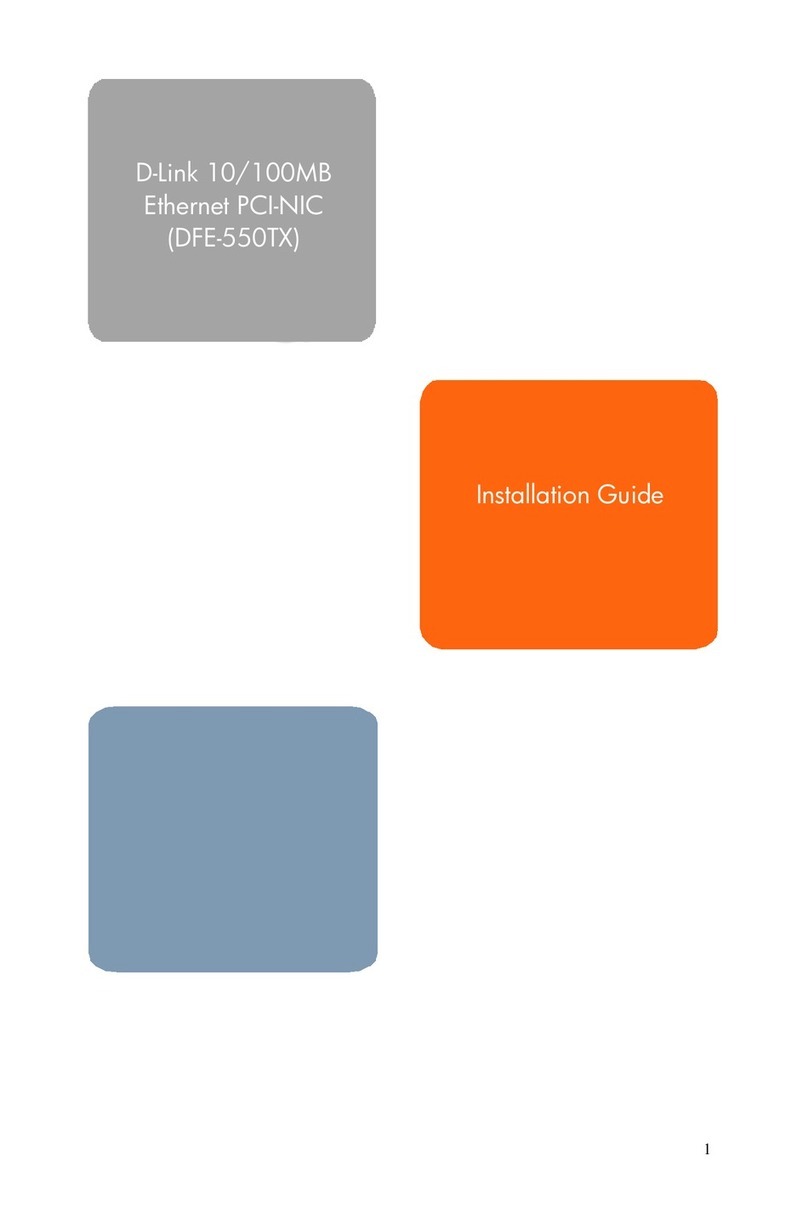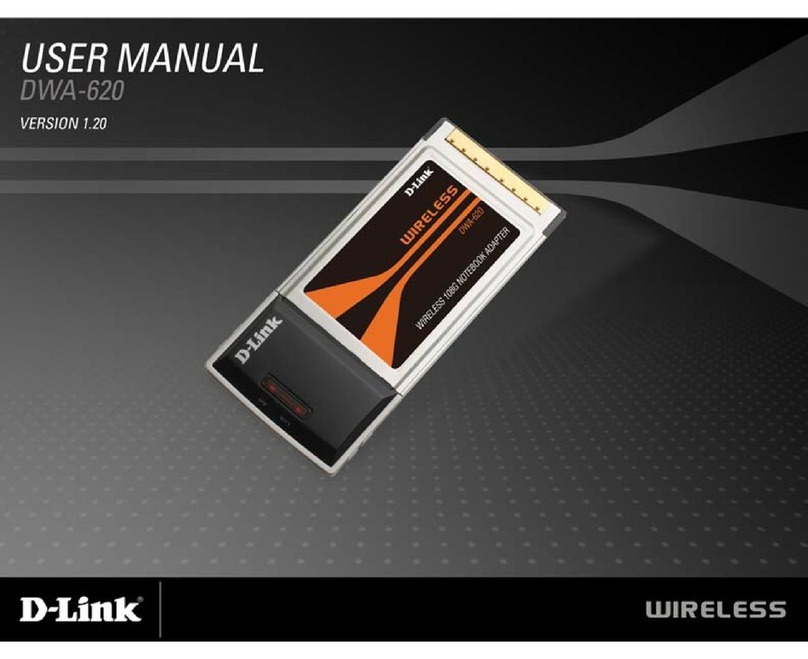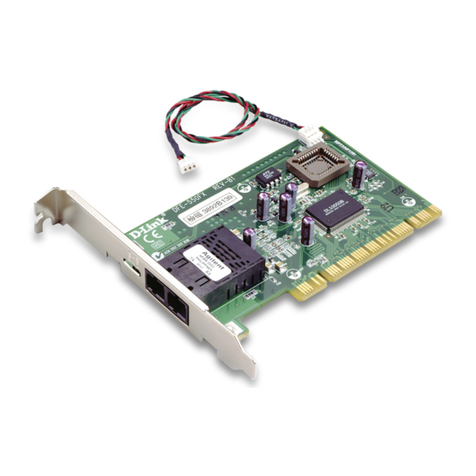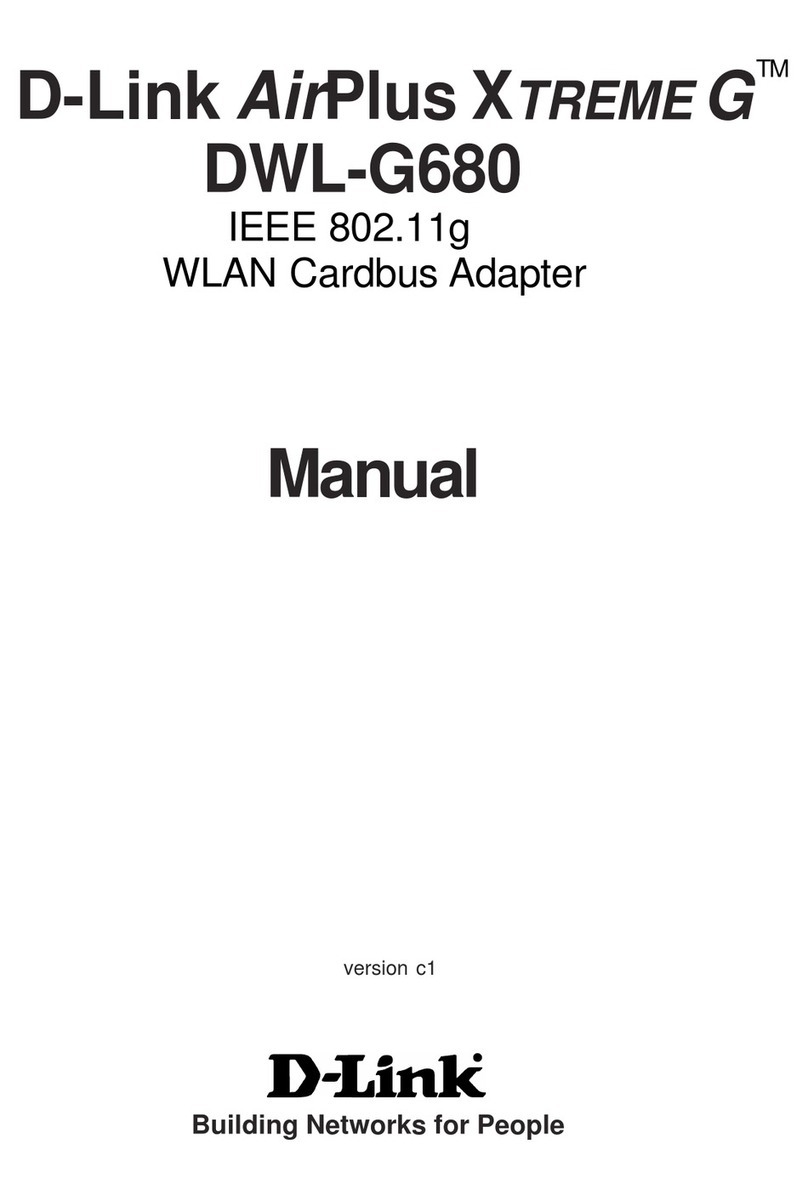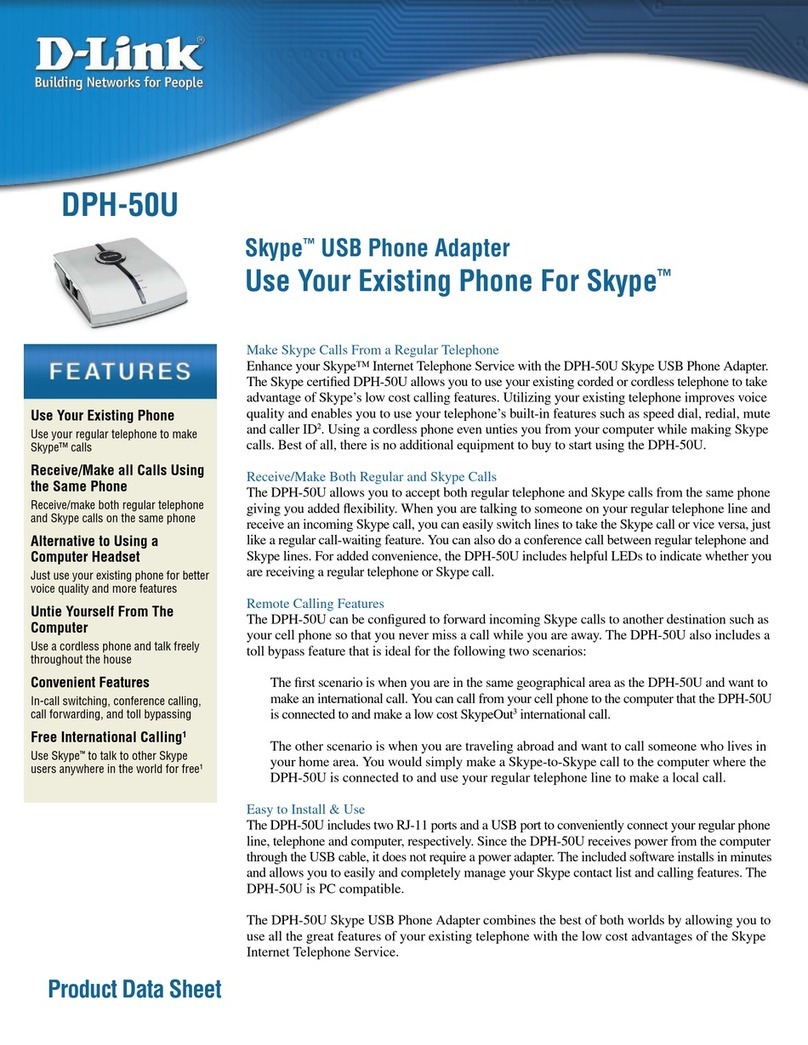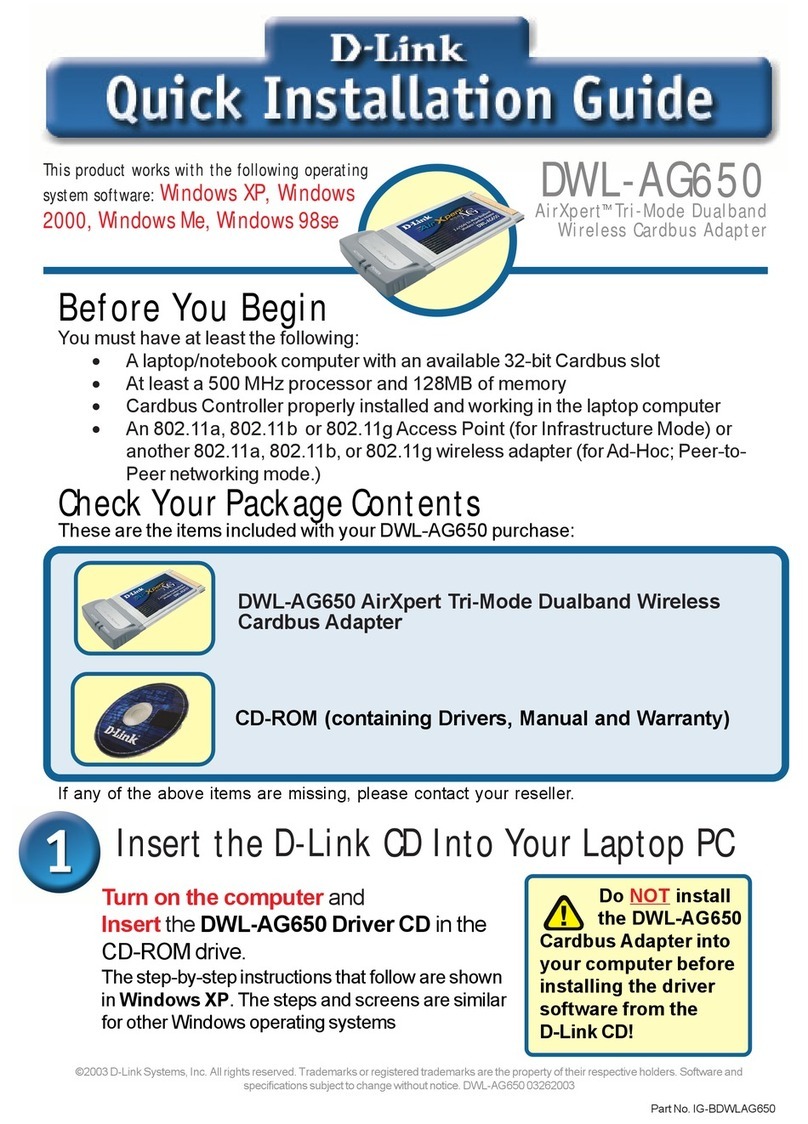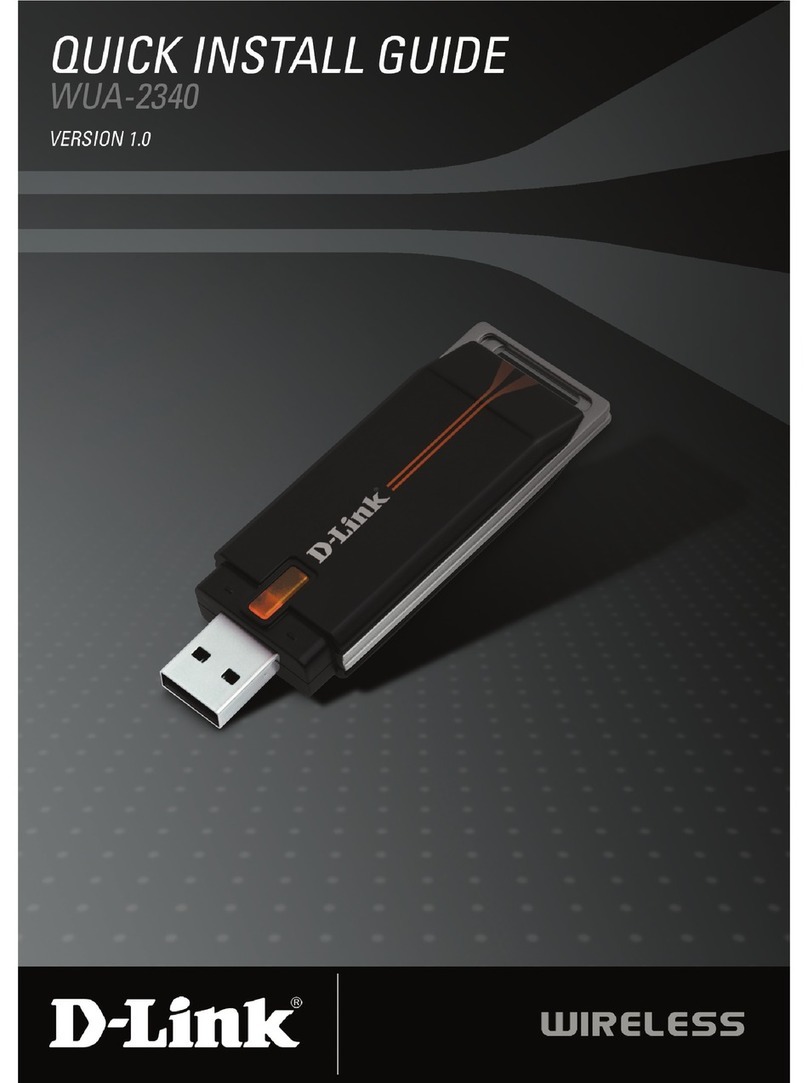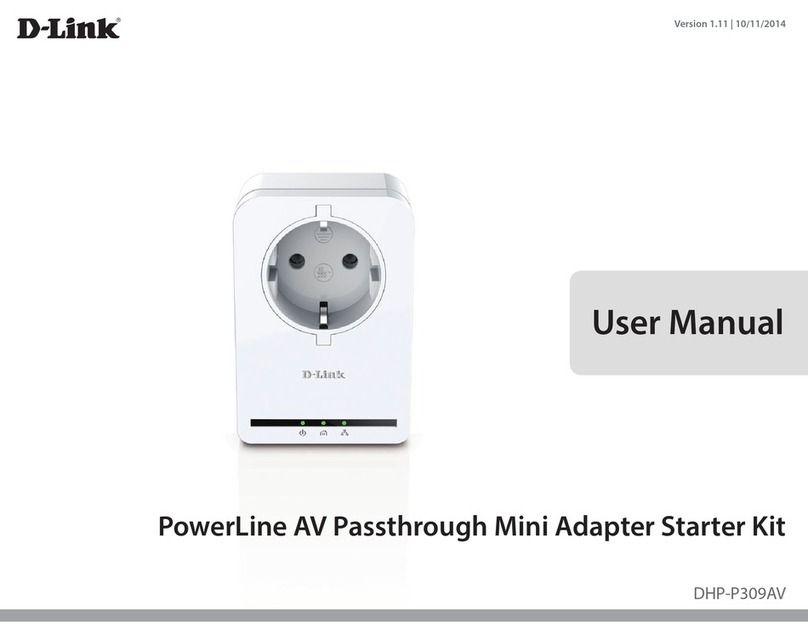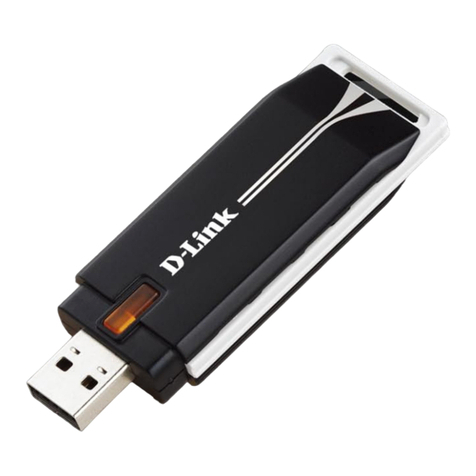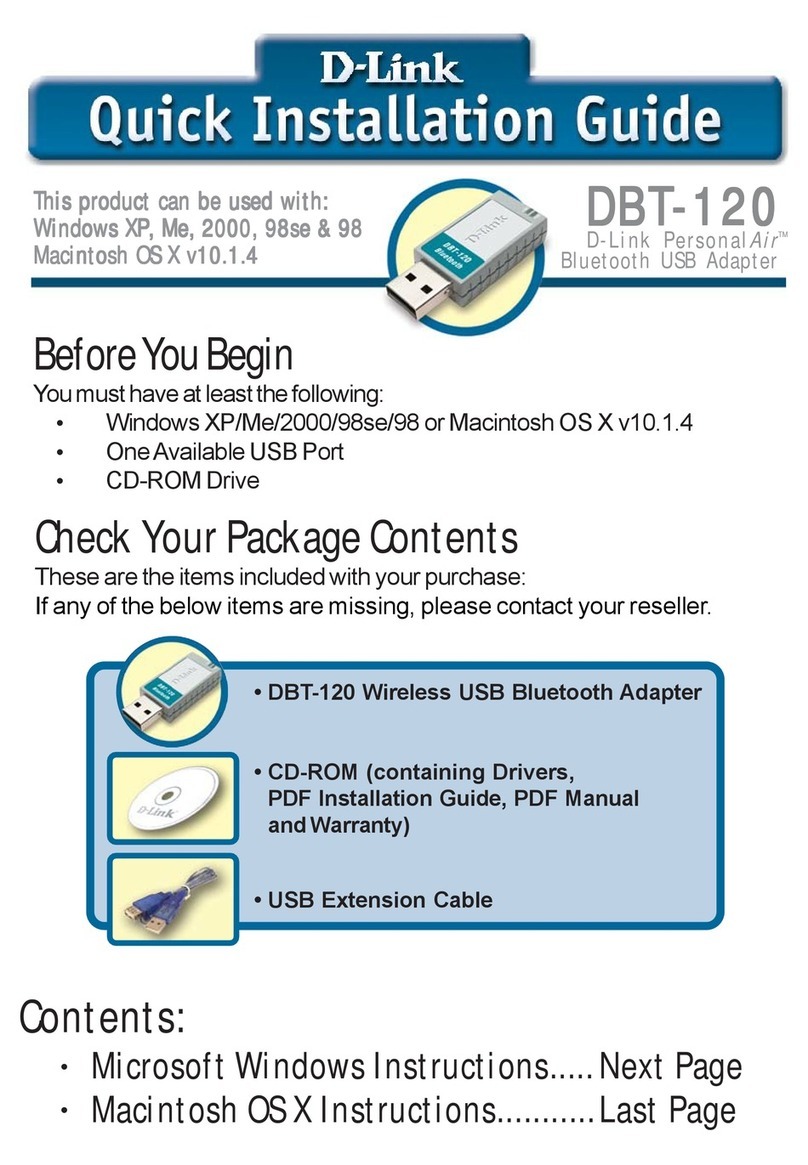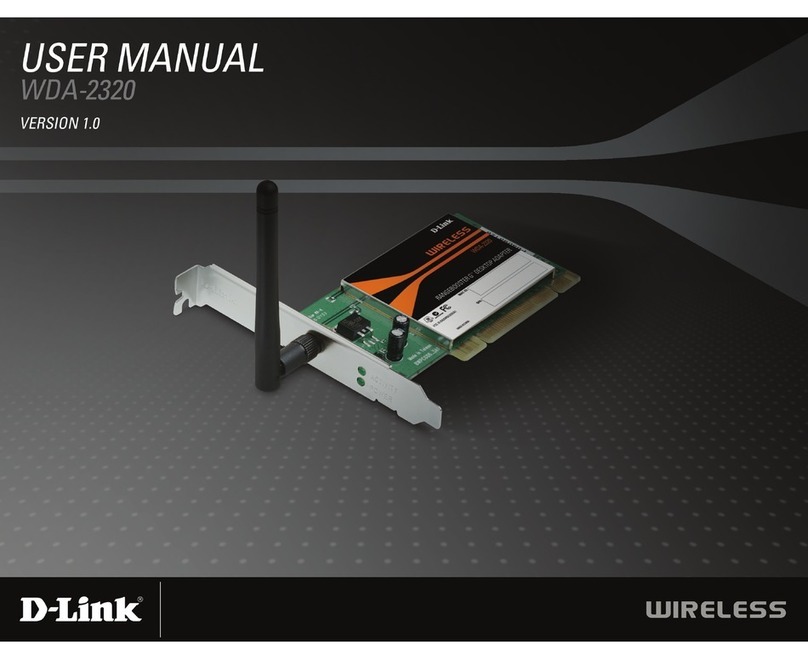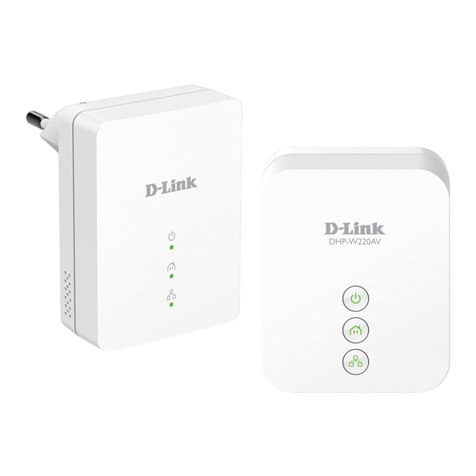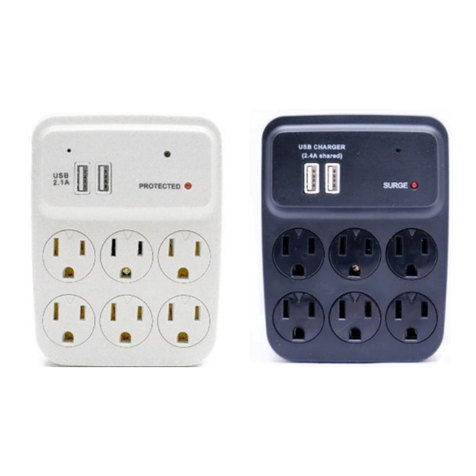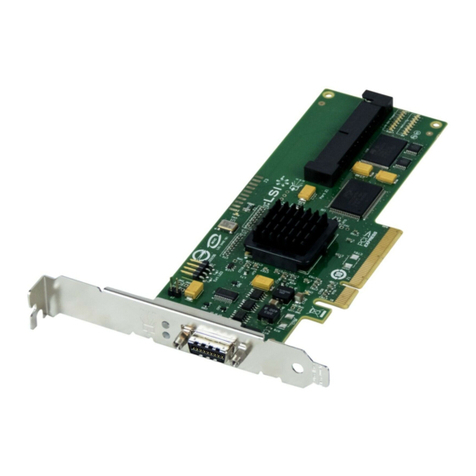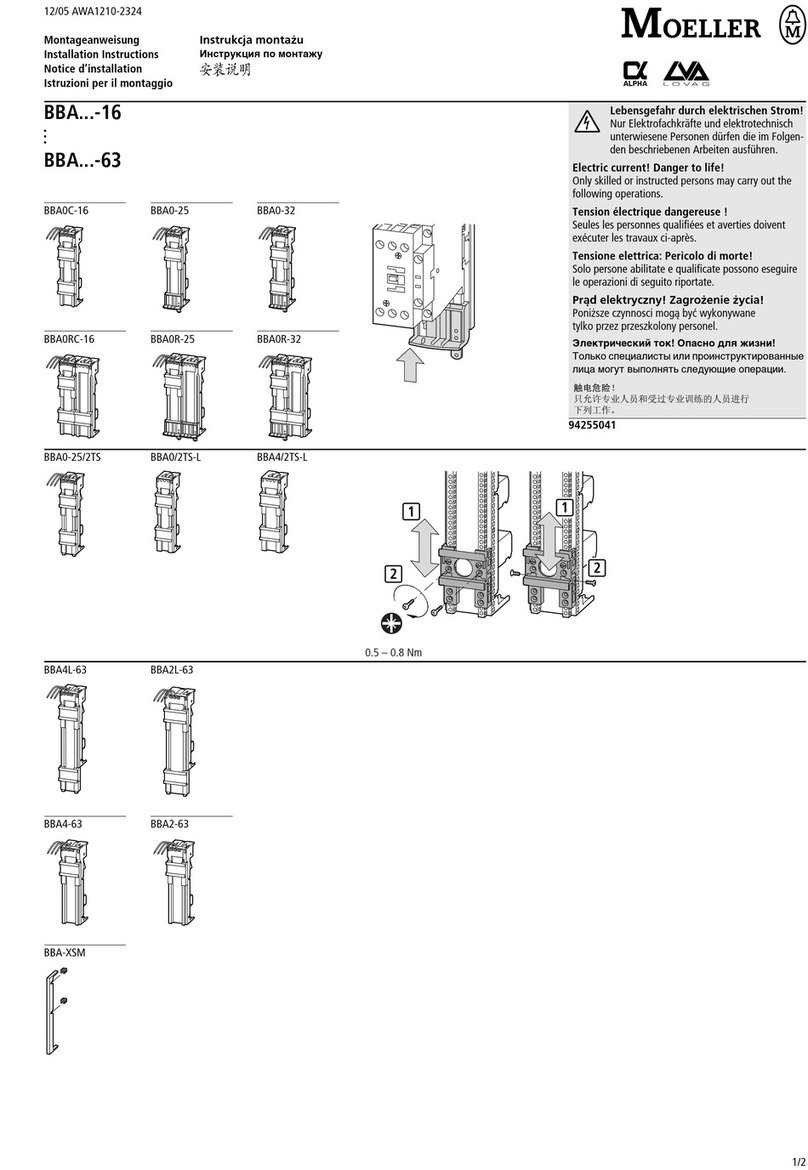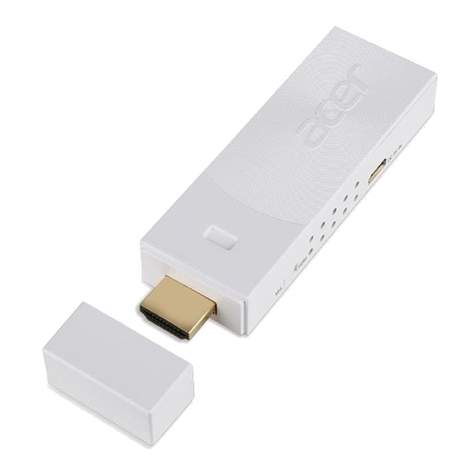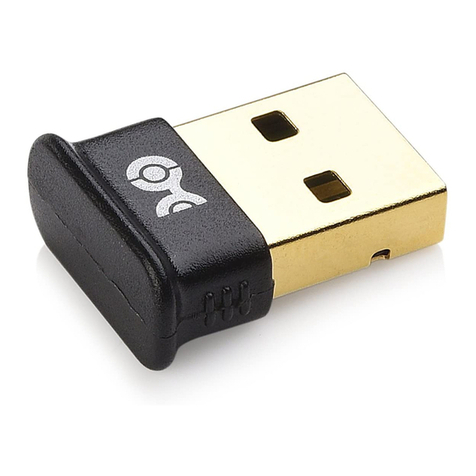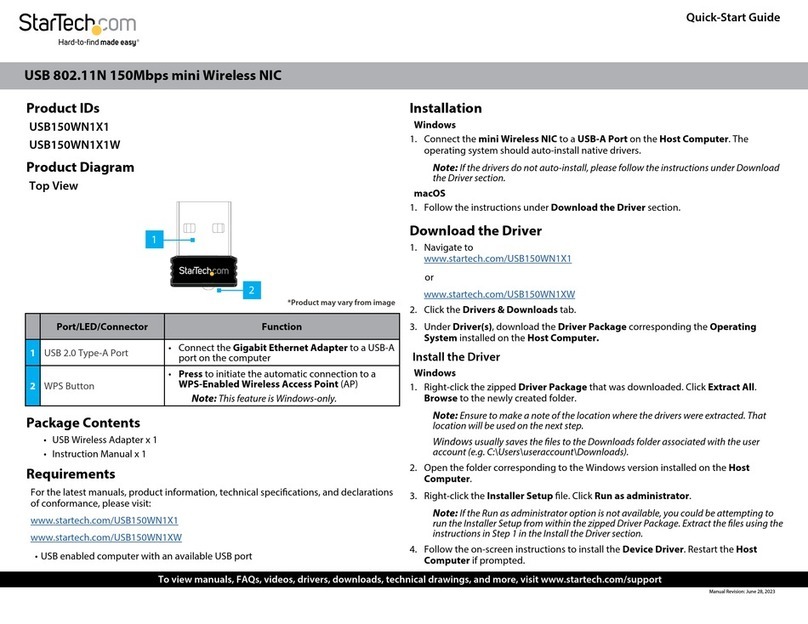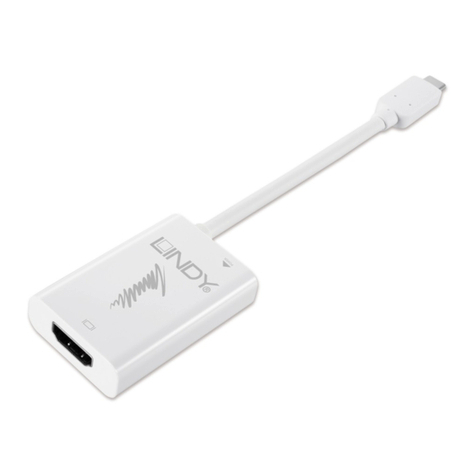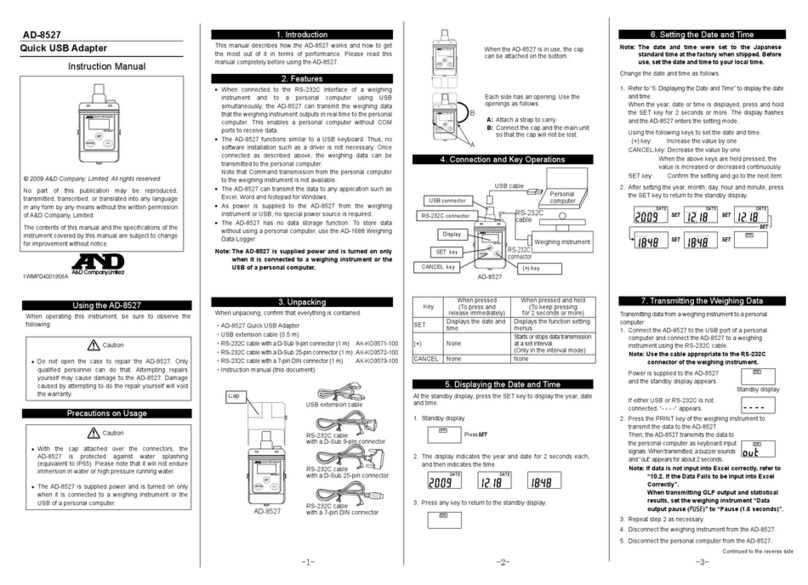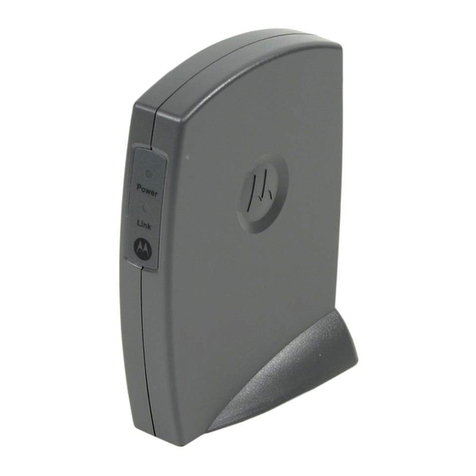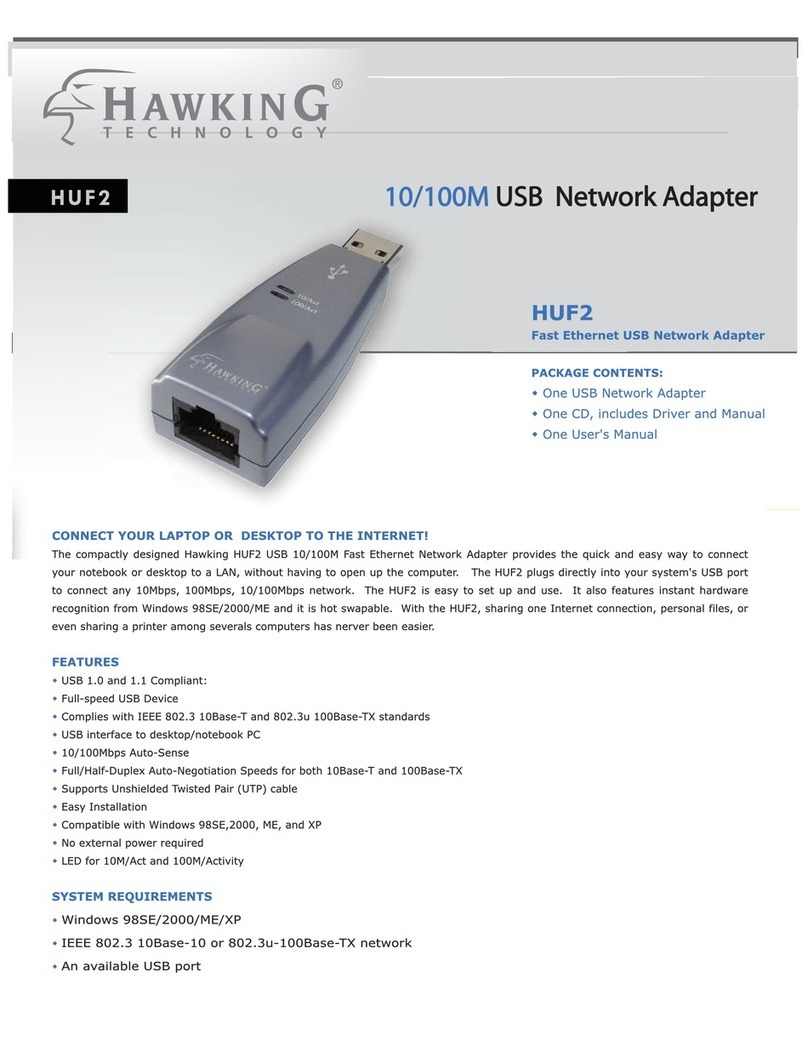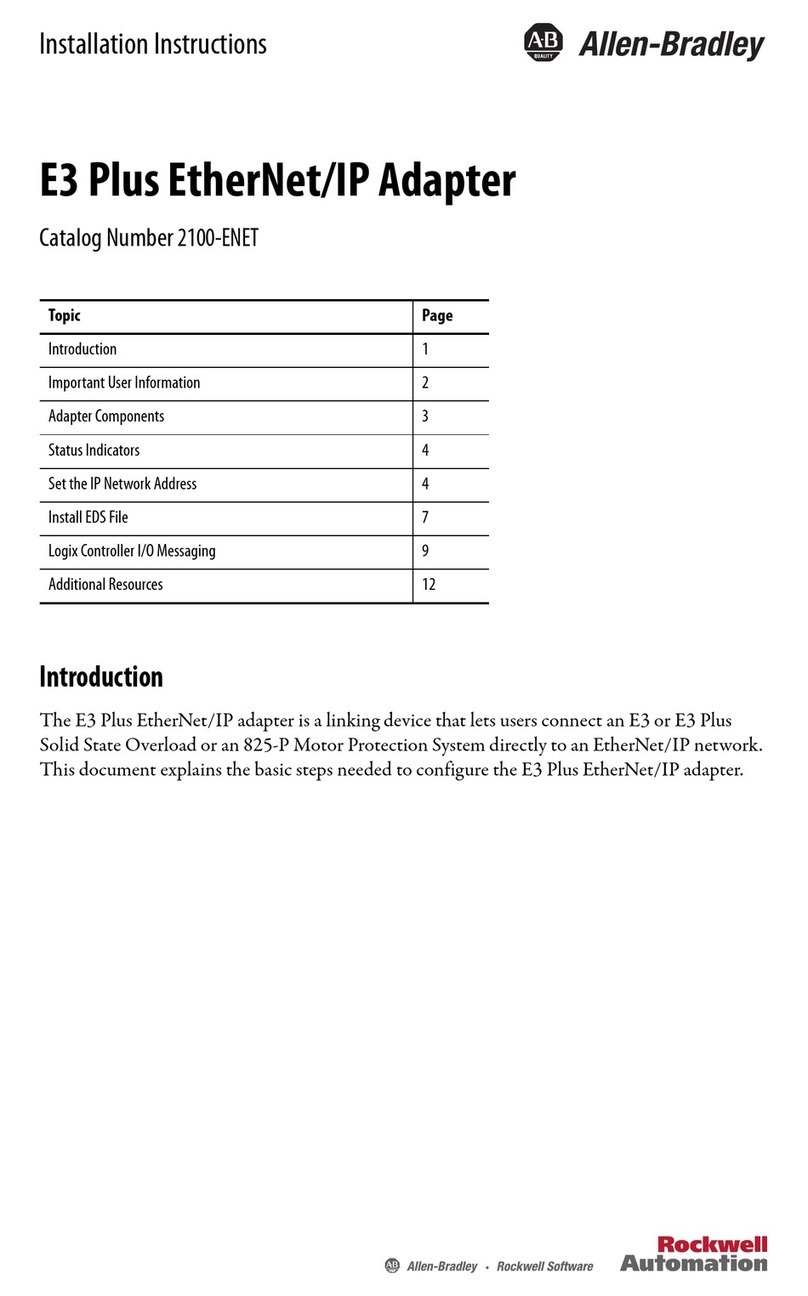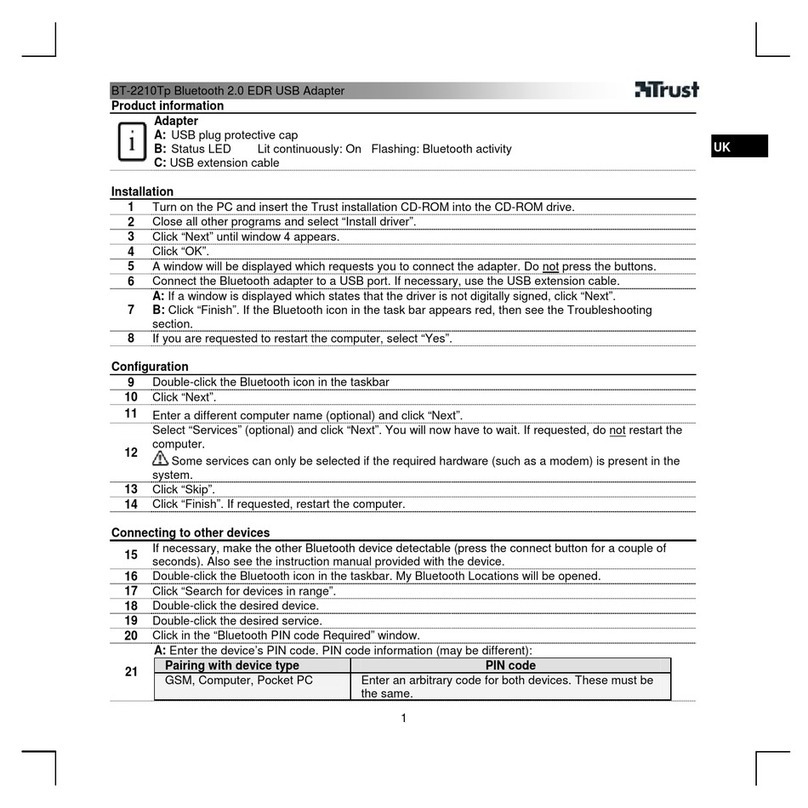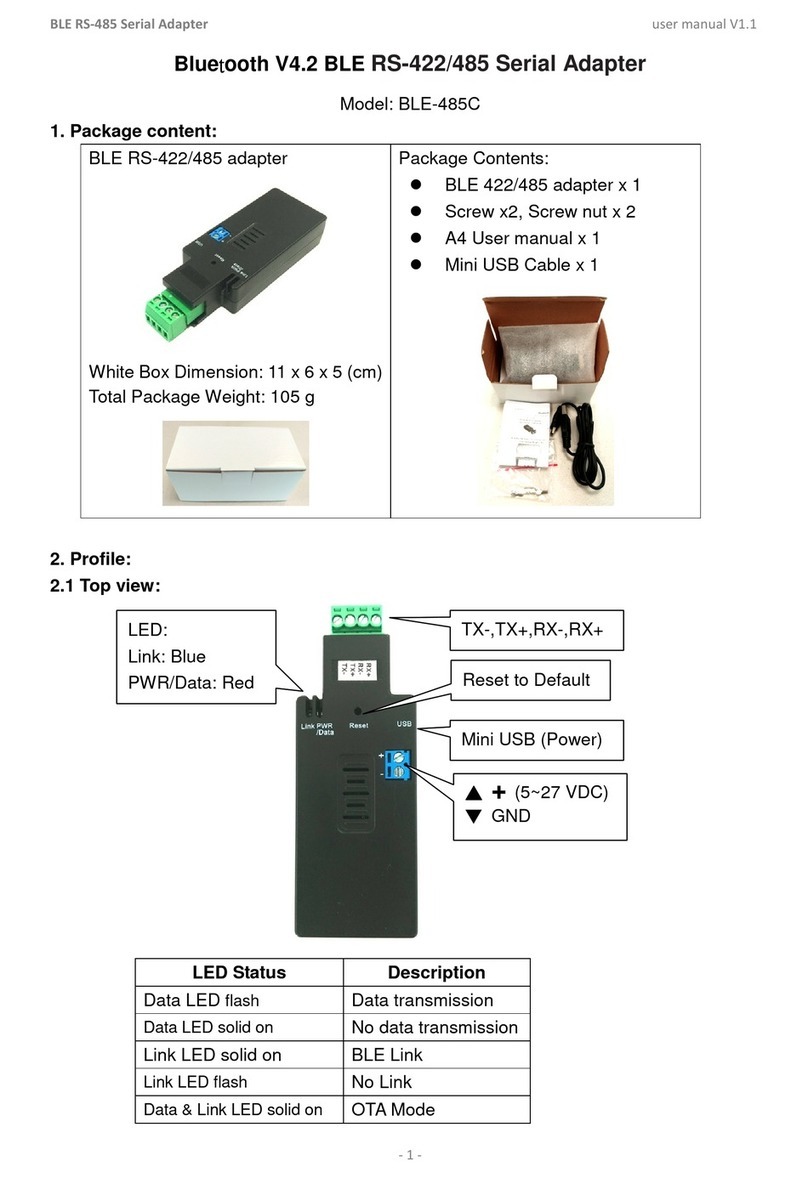5
Wireless Basics
Wireless users can use the same applications they use on a wired network. Wireless
adapter cards used on laptop and desktop systems support the same protocols as
Ethernetadapter cards.
D-Link wireless products are based on industry standards to provide easy-to-use and
compatiblehigh-speedwirelessconnectivitywithinyour home,businessorpublicaccess
wirelessnetworks.D-Link wirelessproductswill allowyouaccess tothedata youwant,
whenandwhereyouwantit.Youwillbeabletoenjoythefreedomthatwirelessnetworking
brings.
Awireless localareanetwork(WLAN)is acomputer networkthattransmitsandreceives
datawith radiosignalsinstead ofwires. WLANsare usedincreasingly inbothhomeand
office environments, and public areas such as airports, coffee shops and universities.
InnovativewaystoutilizeWLANtechnologyarehelpingpeopletoworkandcommunicate
more efficiently. Increased mobility and the absence of cabling and other fixed
infrastructurehaveproven tobe beneficialtomany users.
People use WLAN technology for many different purposes:
Mobility - Productivity increases when people have access to data in any location
within the operating range of the WLAN. Management decisions based on real-time
informationcansignificantly improveworker efficiency.
Low Implementation Costs - WLANs are easy to set up, manage, change and
relocate. Networks that frequently change can benefit from WLANs ease of
implementation. WLANs can operate in locations where installation of wiring may be
impractical.
Installation and Network Expansion - InstallingaWLAN system canbe fast and
easy and can eliminate the need to pull cable through walls and ceilings. Wireless
technologyallowsthe networktogo wherewires cannot go- even outsidethe homeor
office.
Inexpensive Solution - Wireless network devices are as competitively priced as
conventionalEthernet networkdevices.
Scalability - WLANs can be configured in a variety of ways to meet the needs of
specific applications and installations. Configurations are easily changed and range
fromPeer-to-Peer networkssuitable fora smallnumber ofusers tolarger Infrastructure
networkstoaccommodate hundredsorthousands ofusers,depending onthenumber
ofwireless devicesdeployed.
